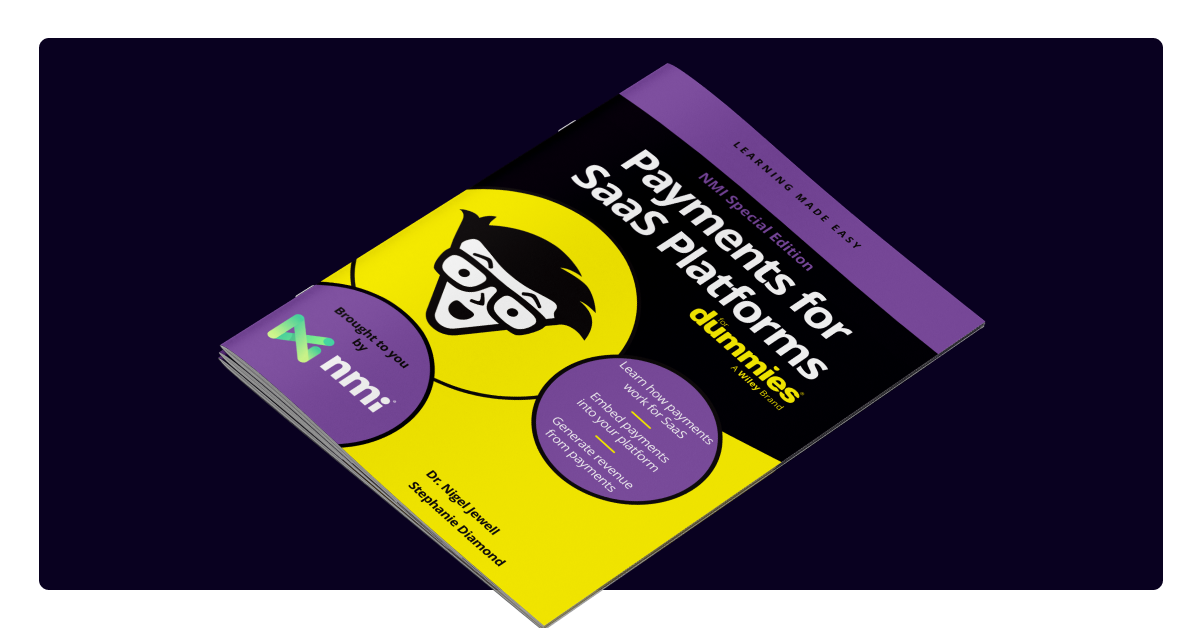In 2023, Virtue Market Research estimated the global embedded payments market to be valued at $173.60 billion. By 2030, that number is expected to top $1.8 trillion.
That’s not just growth — it’s a transformation. Payments are no longer a background process; they’re becoming a core feature of modern software. And for SaaS platforms, this shift isn’t optional. It’s an opportunity to build better experiences, unlock new revenue streams and create stickier customer relationships.
Why? Because embedded payments aren’t just about taking money. They’re about owning the moment your customers transact — keeping everything seamless, intuitive and inside your platform. In a world where every extra click risks a drop-off, embedding payments is no longer a nice-to-have. It’s the new expectation.
What Are Embedded Payments?
Embedded payments refer to payment processing solutions integrated directly into software platforms or applications.
For instance, when someone orders food through a restaurant’s branded app, the entire process, from order to payment, happens inside the app. There’s no handoff to a third-party checkout page. It’s seamless, fast and intuitive.
With this technology, users never have to leave a platform’s environment to complete a transaction. Today, that level of convenience isn’t just a nice-to-have — it’s becoming the expectation.
Why Embedded Payments Matter for SaaS Platforms
Modern consumers want fast, frictionless payment experiences, and every click or redirect adds a chance for them to drop off. By embedding payments, you can reduce friction while increasing control.
You’re no longer sending users off-platform to complete a transaction on a third-party site. Instead, you own the full customer journey — from sign-up to sale — while gathering valuable behavioral insights along the way.
That means:
- Better visibility into user behavior
- More consistent branding
- Fewer abandoned transactions
- Greater lifetime value from every customer
And for SaaS platforms whose business users rely on subscription models, that user experience can make a big difference in customer lifetime value.
Traditional vs. Embedded Payments: What’s the Real Difference?
In traditional setups, SaaS platforms often bolt on payment functionality using third-party providers. While this may get the job done, it can introduce friction points that disrupt the customer experience.
Let’s break it down:
Traditional Payments:
- Users are redirected off-platform
- Branding isn’t always possible
- You have limited data visibility
- Drop-off rates are higher
Embedded Payments:
- Transactions stay in your app
- You control the branding and UX (user experience)
- You have greater access to data and modern payment systems
- Payments are more intuitive and convenient for end-users
When payments are embedded into your platform, the experience feels cohesive. There are no detours or disjointed steps; just a simple, fluid process that keeps users engaged and paying.
The Value Embedded Payments Deliver
Benefits For Your Platform
Embedded payments offer a strategic edge, making your product more valuable and harder to replace.
- Higher conversion rates: Fewer steps at checkout = more completed sales
- Improved analytics: Access to end-to-end payment data empowers smarter business decisions
- Operational simplicity: Reduced reliance on external tools and manual reconciliation leads to greater operational efficiency
- Stronger brand presence: Users see your branding at every touchpoint
Over time, this increases trust and builds a tighter relationship between your platform and users.
Benefits For Your Customers
Whether they’re small businesses, nonprofits or enterprise teams, your users also benefit from embedded payments.
- Frictionless checkouts: No more jumping between browser tabs or getting sent to unfamiliar sites for payment
- Speed and convenience: Payments happen in seconds, without any extra steps
- Consistent experience: A unified platform and experience means no unexpected surprises
- Seamless subscriptions & one-click checkouts: Stored credentials with features like network tokenization enables seamless one-click checkouts and recurring payments
- Greater confidence: Familiar branding and UI reduce perceived risk during payment
Ultimately, better payment experiences lead to happier users, and happier users are more likely to stick around for the long term.
From Cost Center to Revenue Generator: Monetizing Payments
Historically, payment processing has been treated as a backend function — a necessary part of doing business, but not a source of profit. Embedded payments flip that model. With the right approach, SaaS providers can turn payments into a reliable, recurring revenue stream.
Monetization Strategies for SaaS Platforms:
- Revenue sharing: By partnering with a payment provider, you can earn a portion of transaction fees. This stream grows automatically as your user base and payment volume grow
- Tiered features: Offer value-added services like text-to-pay, advanced fraud protection, Level 2 and 3 processing or analytics dashboards as premium upgrades
- Data-driven services: Use anonymized payment insights to deliver trends or benchmarks to your users
- Financial product integration: Add capabilities like short-term loans, buy now, pay later (BNPL), or insurance products to earn referral fees or commissions
These revenue channels compound over time, helping SaaS companies effectively turn payment services from a cost center into a revenue generator.
Embedded Payments Increase Stickiness and Reduce Churn
When your software becomes central to a customer’s payment operations, it becomes significantly harder to replace. Users depend on your platform not only to run their business, but to get paid.
This “stickiness” is especially valuable in the subscription economy, where customer retention is essential. Failed or delayed payments can mean lost revenue, increased support tickets and higher churn.
According to PYMNTS, nearly half (48%) of cardholder churn is tied to failed payments. With embedded payment systems, you gain more control over payment workflows, automated retries and alerts — minimizing failures and keeping users happy and engaged.
Who’s Leading the Way in Embedded Payments?
While the opportunity spans all sectors, certain industries are already seeing benefits from embedded payment adoption.
High-Impact Use Cases for SaaS:
- eCommerce and marketplaces: Deliver one-click checkouts, embedded wallets and seamless buyer experiences
- Nonprofits and fundraising: Streamline donation flows and recurring giving directly within platforms
- Healthcare: Simplify copays, deposits, and HSA/FSA processing with IIAS compliance
- Retail and POS: Merge inventory, scheduling and payments into one intuitive interface
- Hospitality and lodging: Centralize room bookings and payment capture in a single platform
- Construction and field services: Accept payments onsite or offline using mobile-friendly tools
- Financial and accounting platforms: Automate payment collection, invoice reconciliation and reporting
- Booking and scheduling apps: Accept payments seamlessly during appointment setup
Each of these use cases reflects a shared goal: To offer customers a simpler, faster, more valuable experience powered by embedded payments.
Why SaaS Companies Are Leading Embedded Payment Adoption
SaaS platforms already act as hubs for business operations, making them the natural next step for integrated payments. You have the audience, the workflows and the data; adding payments just connects the dots.
As a software provider, you also understand how to scale, iterate and adapt quickly. These traits make you an ideal candidate for building smarter, more resilient payments infrastructure.
Ready to Embed Payments in Your Platform?
If you’re interested in embedding payments into your software platform, you don’t have to figure it out alone. To help you navigate this evolving space, we’ve created a comprehensive guide, Payments for SaaS Platforms for Dummies.
Inside, you’ll learn:
- How embedded payments differ from traditional setups
- Key monetization models for SaaS providers
- Who the core players are in the payments ecosystem
- How to choose the right payment partner
- What integration actually looks like
- How to manage payments long-term
- The ten biggest mistakes to avoid
Download the free ebook to equip your team with the knowledge and strategy needed to make embedded payments a core part of your product and business model.
Ready to build? Explore our developer sandbox for hands-on access to APIs, SDKs, and modular payment tools — everything you need to start integrating fast.





